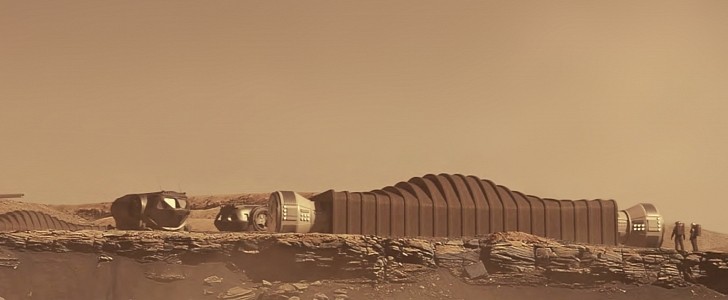If everything goes according to plan, and it probably won’t, we’re looking at a 2050 timeline for the colonization of Mars. A lot of things could happen in three decades and a lot will, including inevitable aging so, to the aspiring astronauts of today, NASA has the second-best thing to living on Mars.
That would be pretending to live on Mars for a full year. Hot on the heels of the announcement that ICON will be 3D-printing a Mars habitat at NASA’s Johnson Space Center, as part of he Crew Health and Performance Exploration Analog (CHAPEA) missions, NASA is reaching out. It might be calling your name, too, if you check the right boxes.
Wannabe astronauts can now apply for one of the four positions offered for live-in astronauts at the Mars habitat, known as the Mars Dune Alpha Habitat. The first one-year test mission kicks off in the fall of 2022, and applications are now open. Perhaps even better than getting to be part of history and working with NASA is the fact that NASA will be paying you to pretend you live on Mars.
Jokes aside, this is a serious program that will help research and develop new methods and tech for future problems human missions to Mars could encounter. This is a rigorous simulated mission, one that will try to anticipate issues associated with flying to and colonizing Mars, including but not limited to “resource limitations, equipment failure, communication delays, other environmental stressors,” spacewalks, scientific research, and “virtual reality and robotic controls.”
All conditions applicable to astronaut applications still stand here: the ideal candidate must hold a master’s degree in engineering, mathematics, biological, physical or computer science, or have a minimum experience of one thousand hours piloting an aircraft. The ideal candidate is 30 to 55 years old, lives in the United States, and is healthy, doesn’t smoke and is proficient in English. If you meet this very strict set of criteria, “Mars is calling!,” as NASA puts it.
Wannabe astronauts can now apply for one of the four positions offered for live-in astronauts at the Mars habitat, known as the Mars Dune Alpha Habitat. The first one-year test mission kicks off in the fall of 2022, and applications are now open. Perhaps even better than getting to be part of history and working with NASA is the fact that NASA will be paying you to pretend you live on Mars.
Jokes aside, this is a serious program that will help research and develop new methods and tech for future problems human missions to Mars could encounter. This is a rigorous simulated mission, one that will try to anticipate issues associated with flying to and colonizing Mars, including but not limited to “resource limitations, equipment failure, communication delays, other environmental stressors,” spacewalks, scientific research, and “virtual reality and robotic controls.”
All conditions applicable to astronaut applications still stand here: the ideal candidate must hold a master’s degree in engineering, mathematics, biological, physical or computer science, or have a minimum experience of one thousand hours piloting an aircraft. The ideal candidate is 30 to 55 years old, lives in the United States, and is healthy, doesn’t smoke and is proficient in English. If you meet this very strict set of criteria, “Mars is calling!,” as NASA puts it.






